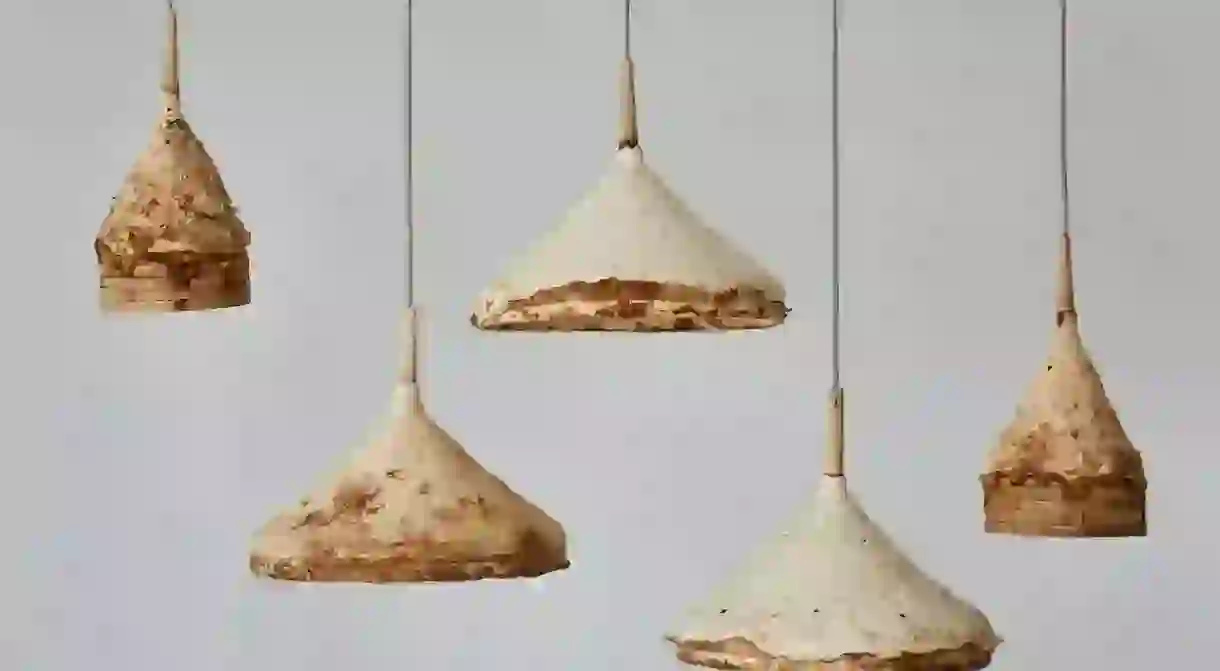Discover the Magic of Mushrooms at London’s Somerset House

A London exhibition looks at how the humble mushroom has impacted our lives, from witchcraft and psychedelia to use in burial suits, as material for chairs and even as an ecological communication system.

Mushrooms are usually thought of as food, but fungi can be so much more than that. The word ‘mushroom’ might bring to mind the joy of finding a slew of yellow chanterelles in a dark forest, a psychedelic experience or even Toad, the mushroom humanoid character in Super Mario. London’s Somerset House is taking a look at how mushrooms can be used in fashion, design and architecture, and how they have been depicted by artists through history.
In Europe, mushrooms used to be objects of horror, connected to poison and witchcraft, but in the 19th century they became accepted as a result of the rise of amateur botany – as well as the fact that mushrooms appeared in children’s literature. “Alice in Wonderland, in particular, placed the idea of a mushroom firmly in the popular imagination, and I think it’s really become a touchstone for how people have viewed mushrooms since,” Somerset House curator Francesca Gavin explains. “It stopped them being seen as something abject, and turned them into something friendly and kind of cute.”

As the climate emergency worsens, exploring new ways of interacting with nature has become more important than ever, which could explain our current fascination with mushrooms. “I think we’re living in a time when nature, and our awareness of ecology, is reaching peak importance. The wider interest in mushrooms is connected to the growing concern and better understanding of how important it is to live in tandem with nature. We can’t survive without it, and we seriously need to readdress how we’re functioning,” Gavin says.
And humans and mushrooms might be more similar than you think. Recently, scientists discovered that fungi communicate between tree roots through thin threads of mycelium, the mass of fine branching tubes that form the main structure of a fungus. “It echoes the way the human brain communicates,” says Gavin. “So not only does that completely upturn the idea of humanity being the centre of the world and the only things that can think, but also how ecosystems function and how trees function. The fact that it’s not just separate organisms that happen to be near each other, but how important it is that they are intertwined.”

Mushrooms have fascinated artists for centuries, and as technology has become more advanced, so have the ways in which fungi have been used. One of the artists exploring new ways of working with mushrooms is Jae Rhim Lee, who has created a decomposable mushroom burial suit. Her ‘Infinity Burial Suit’, which is made of mushrooms and other microorganisms, cleanses the body and soil of the toxins that would otherwise seep into the environment, and delivers nutrients from the body to surrounding plant roots.
British designer Tom Dixon has also worked with the material, creating a chair formed of mycelium together with the Magical Mushroom Company. “This demonstrates how biodegradable materials can be used in new product design to help protect our planet from the negative effects of industry,” says Paul Gilligan, Magical Mushroom Company COO. The chair was initially missing from the London exhibition – it hadn’t yet finished growing.
Despite all the groundbreaking ways of using mushrooms on display in the exhibition, Gavin is certain that we haven’t exhausted all the things we can learn from fungi. “There are amazing researchers out there looking at how we can use mushrooms,” she says. “What are the different applications of fungi, how can humanity have less of an impact on the planet, and how can we look to nature for solutions to some of our terrible mistakes? I think that’s really engaging.”

Mushrooms: The Art, Design and Future of Fungi is at Somerset House from 30 January to 26 April 2020.













